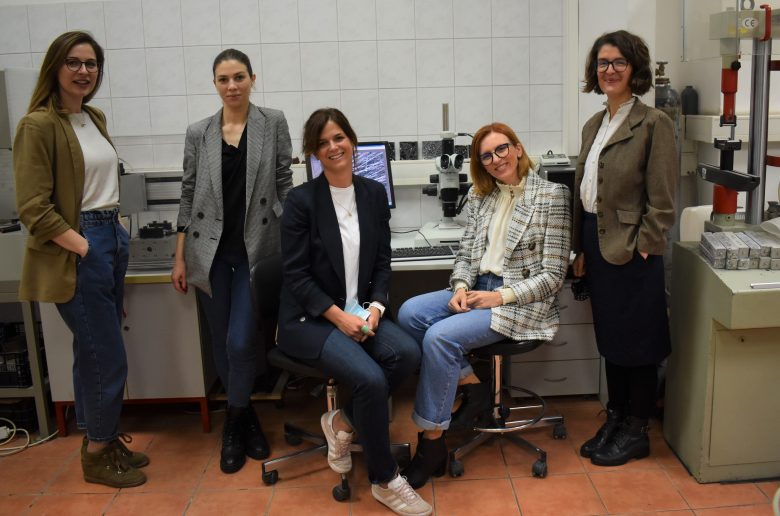
PROJECT OBJECTIVES
ESTABLISHMENT OF RESEARCH GROUP
The members of the research group (Baričević, Jelčić Rukavina, Carević, Frančić Smrkić) have been cooperating for more than 10 years in a number of international and national projects, of which the following can be highlighted: a) TAREC2, Croatian Foundation for Science, b) ANAGENNISI, FP7, c) RUCONBAR, CIP Eco-Innovation and others. Experience in complementary fields is key to the success of these researchers, who will form the core of this newly established group and will further improve themselves by employing a PhD student in the first year and a postdoctoral researcher in the last year of the project.
PROJECT OBJECTIVES
CHARACTERIZATION OF WASTE FIBRES
The main challenge for the use of recycled fibres in construction is their inconsistent quality. To obtain high-strength fibre-reinforced mortars with waste fibres, an integration technology that successfully mitigates balling is required. The way waste fibres are obtained, results in them being too tangled to be easily incorporated into cementitious composites. Moreover, the durability of waste fibres in alkaline environment is crucial for their application in cement matrix.
Contribution to the research area:
The ReWire project is developing techniques for the processing and integration of waste fibres into cementitious composites, overcoming a critical technological barrier.
PROJECT OBJECTIVES
SYNERGY OF WASTE FIBRES IN HIGH-STRENGTH CEMENTITIOUS COMPOSITES
Cracking in cementitious composites occurs at different stages of service life, from the hardening onwards, so each stage requires fibres with specific properties. In hybrid fibre reinforced concrete, there is a positive interaction between the different fibre types, and the resulting hybrid performance exceeds the sum of the individual fibre performance. In the ReWire project, the idea is to develop hybrids based on fibre function. One fibre type is expected to improve fresh and early ageing properties (first 24 hours), while the second fibre leads to improved mechanical and durability properties. Waste fibres are therefore selected based on their properties and expected contribution to composite properties.
Contribution to the research area:
Characterization of waste fibres and performance-based design to achieve synergistic effects of waste fibres in high strength cementitious composites.
PROJECT OBJECTIVES
DURABILITY OF WASTE FIBER REINFORCED CEMENTITIOUS COMPOSITES
Structures are seldom subjected to only one action during their service life, usually there is a combination of mechanical and environmental stresses. However, the synergistic effect of environmental and mechanical actions on the long-term behaviour of high-strength waste fibre-reinforced cementitious composites has not yet been clarified. Moreover, due to the widespread use of superplasticizers and a high proportion of supplementary cementitious materials, high-strength cementitious composites are characterized by a low water-binder ratio and a finer pore structure, which contributes significantly to the increased autogenous shrinkage. For the prediction of the volume deformations, the relationship between the macroscopically observed mechanisms and their source at the microstructure level should be established. The development of the model to predict the early aging cracks is preceded by a detailed analysis of the parameters affecting shrinkage, such as the internal change of RH, the bound water content, and the pore structure.
Contribution to the research area:
Development of a model to predict the early volume deformation of waste fiber reinforced cementitious composites. ReWire aims to better understand the mechanisms of accelerated deterioration under combined loads to find appropriate countermeasures to extend the life of reinforced concrete structures in aggressive environments.
PROJECT OBJECTIVES
LCA ANALYSIS
The use of waste fibres in building materials reduces waste in landfills, saves energy, is environmentally friendly and promotes sustainable solutions. However, a life cycle and environmental impact assessment should be carried out to identify economic and environmentally friendly sources for the use of waste fibres in construction. This will allow a more objective assessment of the environmental impact of cementitious composites with waste fibres.
Contribution to the research area:
The quantitative assessment of environmental impact indicators by LCA and LCCA will aim to prove the cost/environmental effectiveness of the proposed new solutions.